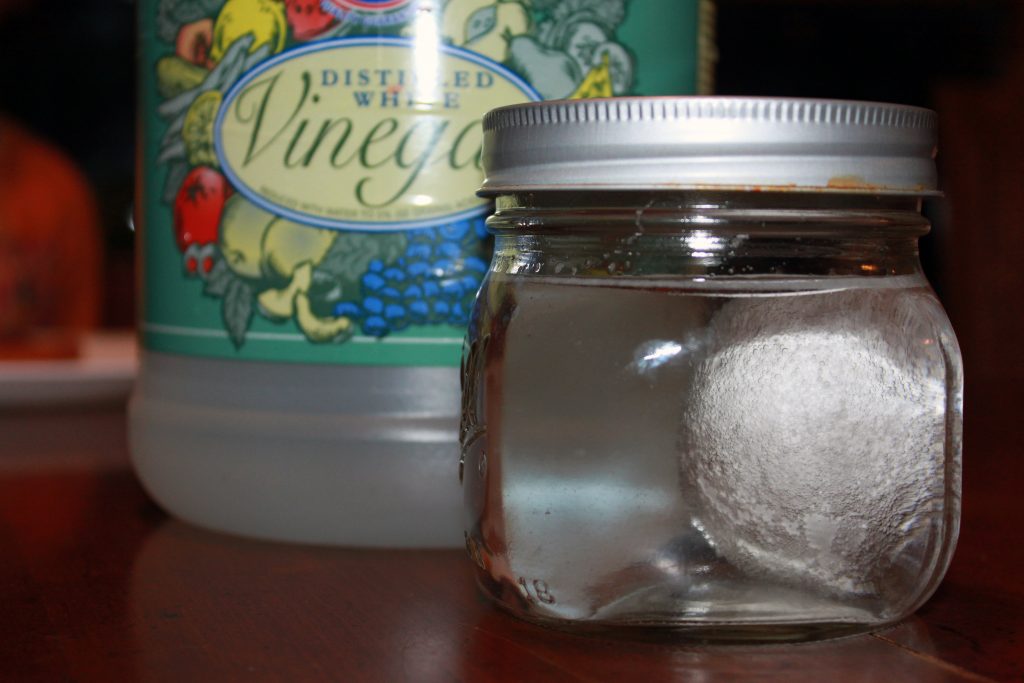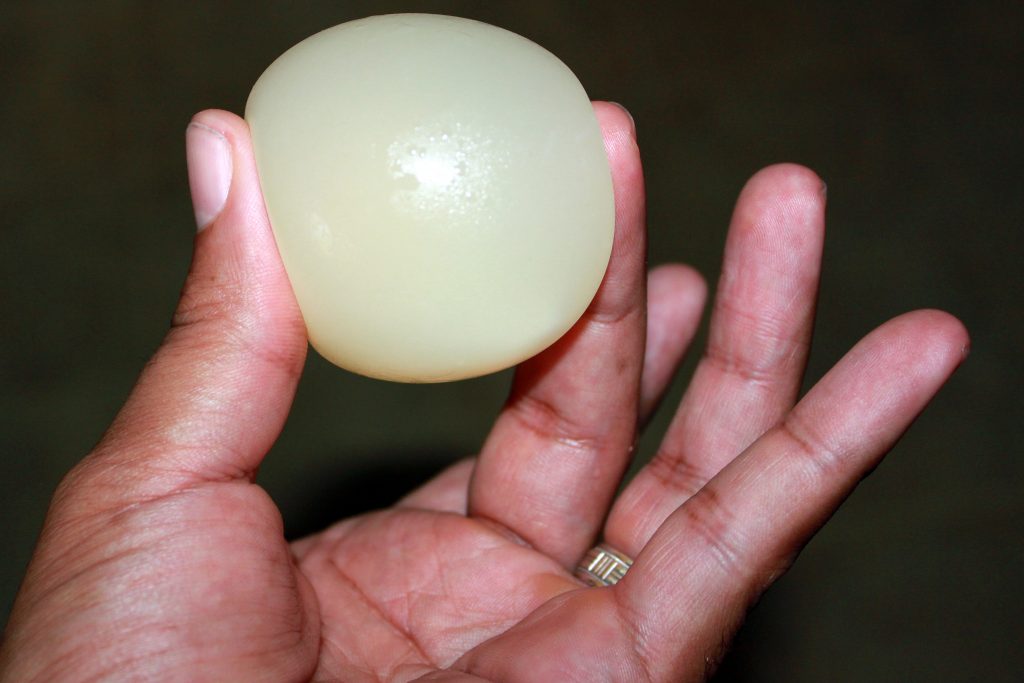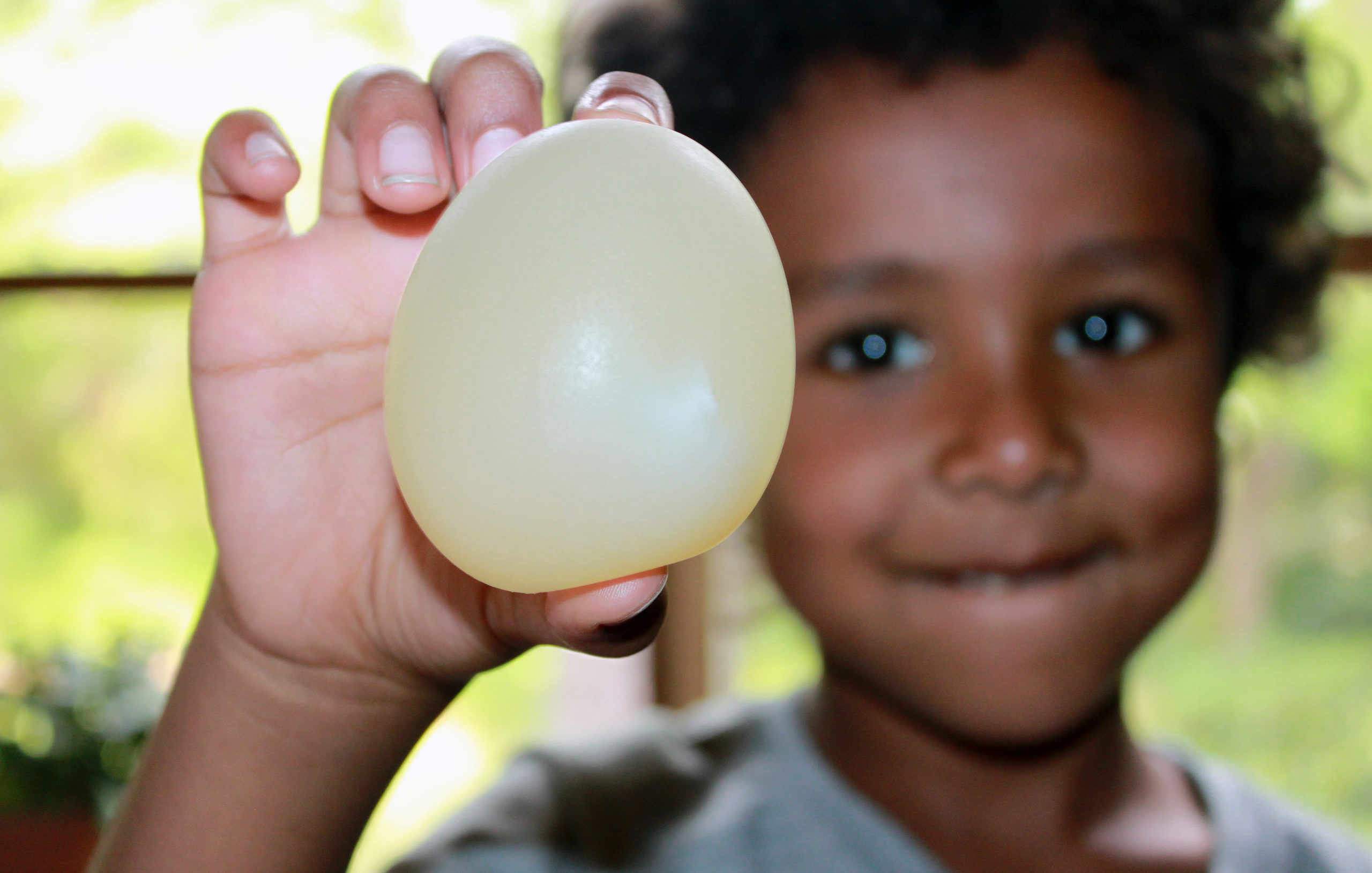Have you ever stripped an egg of its shell? In this activity, you will create your very own naked egg and learn a little science along the way!
Some fried them. Many scramble them. Others boiled them. Chances are that you even painted and hunted for them. Here’s a question for you: Have you ever stripped an egg of its shell? In this activity, you will create your very own naked egg!
Here’s What You Need
- Cup or jar large enough to hold the egg
- Vinegar
- Egg
Here’s What You Do
Gently place the eggs in the cup or jar. Pour enough vinegar into the cup or jar to cover the egg. Take a couple of minutes to observe what happens to the egg as it sits in the vinegar. You might notice bubbles forming on the outside of the egg. We’ll talk about that a bit later. For now, place the cup or jar somewhere out of the way and let it sit for about 24 hours.

You will see bubbles forming on the egg shortly after pouring in the vinegar.
After 24 hours, carefully remove the egg from the vinegar. You might need a large spoon. Make sure you are very careful. The egg will be very fragile at this point. Pour the vinegar out of the cup/jar. Gently place the egg back in the cup/jar, cover it with fresh vinegar, and put it somewhere safe for another 24 hours.
Use your hand or a spoon to carefully remove the egg from the vinegar. Rinse them with water. You should now have an egg without a shell! You will notice that the eggs shell is gone. Instead, a thin membrane is all that is left surrounding the egg white and yolk. It is translucent and flexes when you squeeze it! Congratulations! You have successfully created a naked egg!

You can squeeze the naked egg easily between your fingers.
The Science Behind the Naked Egg
Of course, there is a lot of science behind the naked egg. For example, when you poured the vinegar over the egg, you probably noticed that tiny bubbles formed on the outside of the egg. Those bubbles are actually the result of a chemical reaction between the vinegar and the shell. Vinegar is an acid. Scientists call it acetic acid (CH3COOH). The vinegar you buy in the grocery store is about 95% water and 5% acetic acid. Egg shells are made up of calcium carbonate (used to make chalk at one time). When the vinegar comes in contact with the egg shell, it begins to break down the calcium carbonate into calcium and carbonate. The calcium floats around in the vinegar. The carbonate part reacts to form carbon dioxide gas. That’s what’s inside the tiny bubbles you see forming on the side of the egg. If you allow the egg to sit in the open air, the membrane will react with the carbon dioxide floating in the air and begin to harden again.
You might also notice that your egg seems to swell as it sits in the vinegar. This is because some of the liquid vinegar is actually moving into the egg through the shell membrane. Because things can move through the membrane of the egg, scientists would describe the membrane as permeable. They also describe the movement of a liquid from one solution through a permeable membrane and into another less concentrated solution as osmosis. Osmosis is very important to both plants and animals. For example, in our bodies, osmosis helps our kidneys recover water from our waste. If you break the membrane of your naked egg, you will notice that the yolk is floating in vinegar solution. In a way, you have pickled the egg!

















